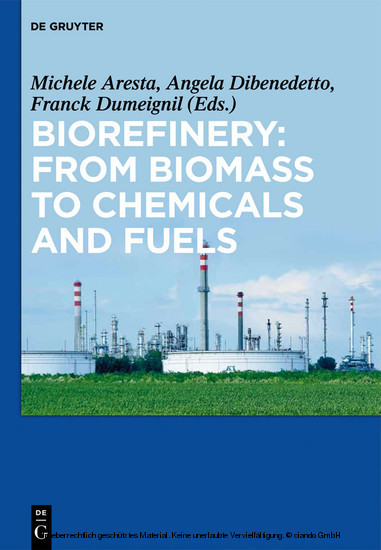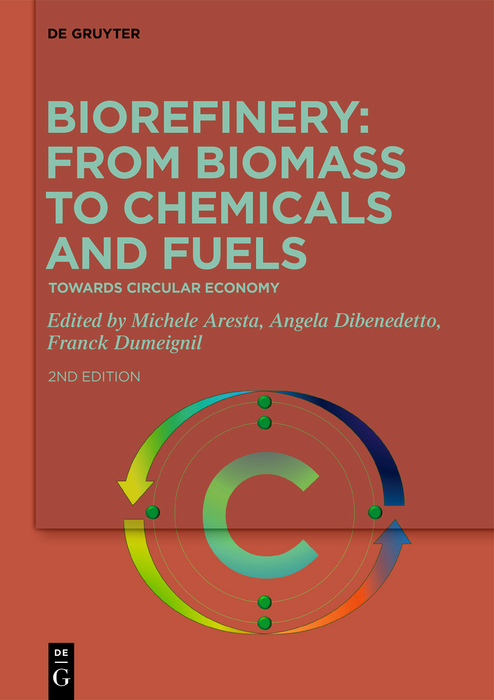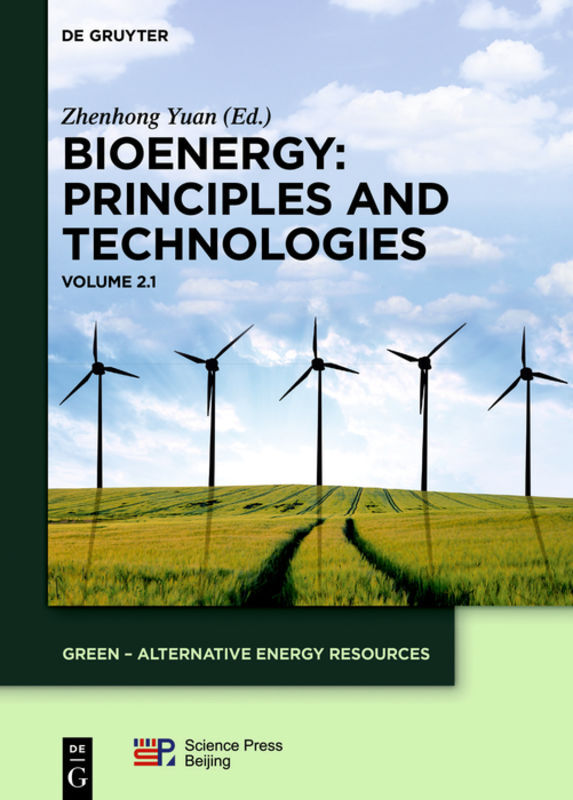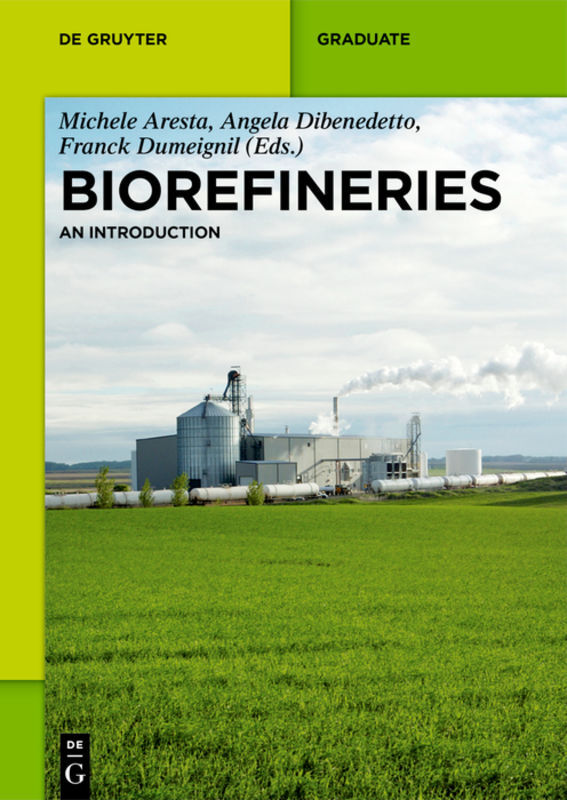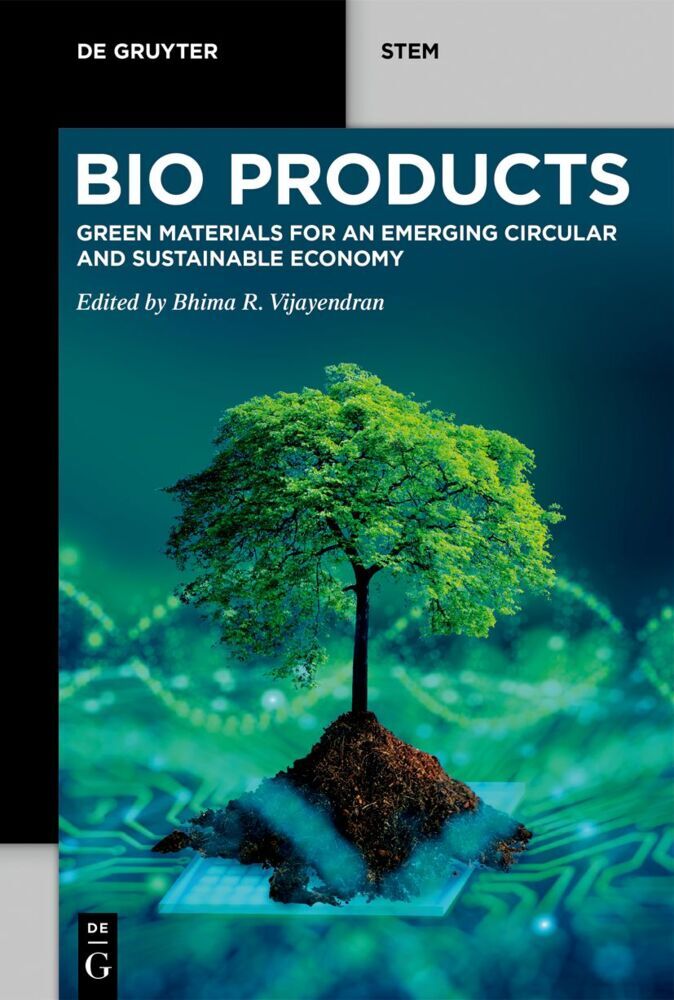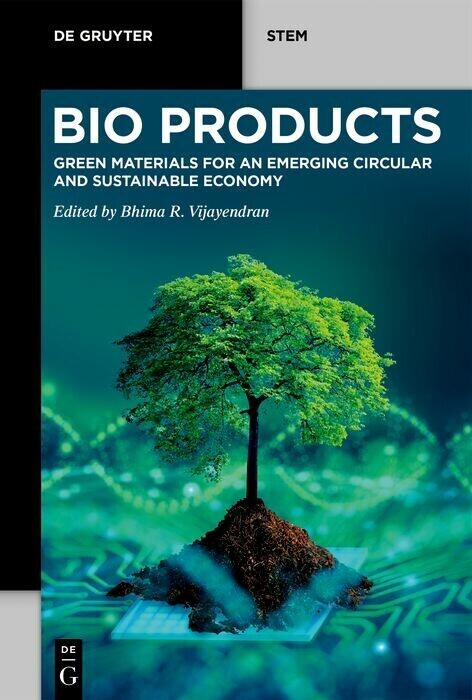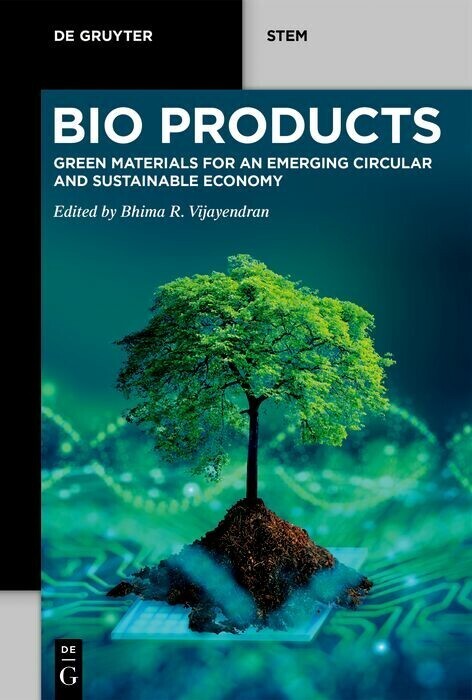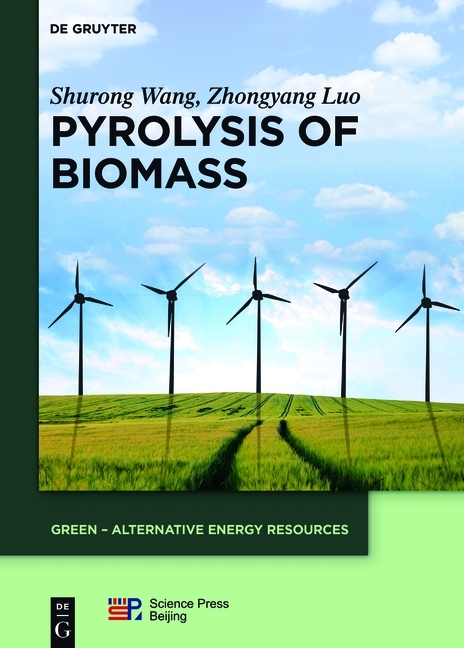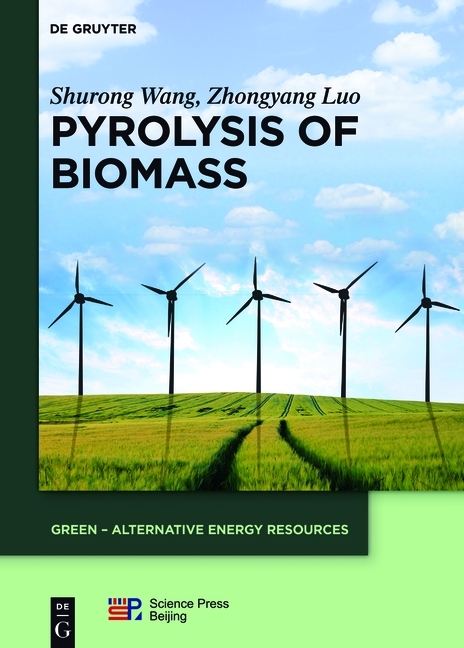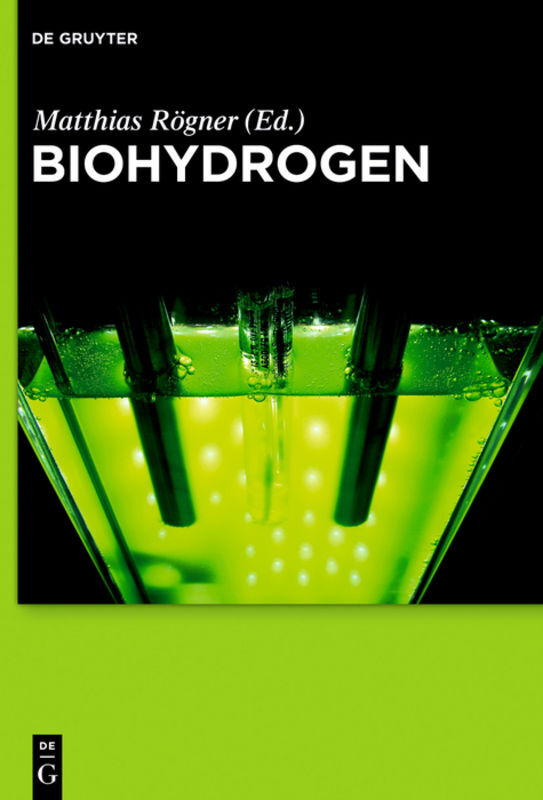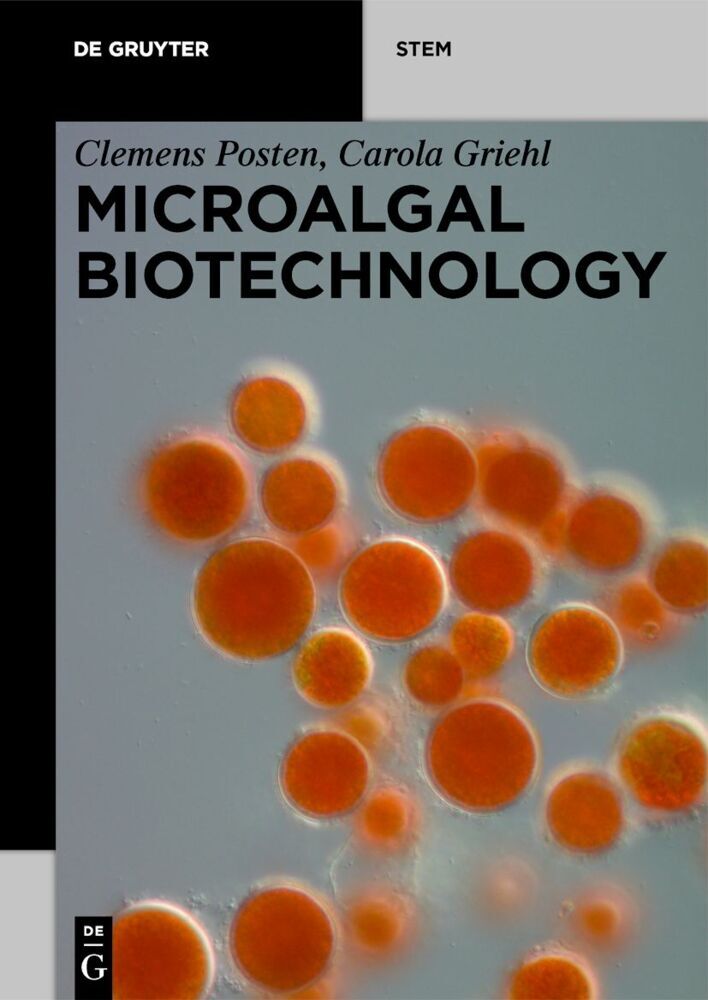Biorefinery
From Biomass to Chemicals and Fuels
This book provides an introduction to the basic science and technologies for the conversion of biomass (terrestrial and aquatic) into chemicals and fuels, as well as an overview of innovations in the field. The entire value chain for converting raw materials into platform molecules and their transformation into final productsare presented in detail. Both cellulosic and oleaginous biomassare considered.Thebook contains contributionsby both academic scientists and industrial technologists so that each topic combines state-of-the-art scientific knowledge with innovative technologies relevant to chemical industries.
1;Preface;132;List of Contributing Authors;153;1 A new concept of biorefinery comes into operation: the EuroBioRef concept;193.1;1.1 General context;193.1.1;1.1.1 Toward a bio-based economy;193.1.2;1.1.2 Biorefineries and the level of integration;203.2;1.2 The EuroBioRef biorefinery concept, objectives, and methodology;213.2.1;1.2.1 Flexibility, adaptability, and multidimensional integration of the EuroBioRef project;213.2.2;1.2.2 The concept principles of EuroBioRef;233.2.3;1.2.3 The objectives of the EuroBioRef project;253.2.4;1.2.4 The EuroBioRef approach to reach the objectives;273.2.5;1.2.5 EuroBioRef innovation and expected results (Fig. 1.7);293.2.6;1.2.6 S/T methodology and associated subprojects;303.3;1.3 Main achievements of the first year of the project;323.4;Acknowledgements;353.5;References;354;2 Refinery of the future: feedstock, processes, products;374.1;2.1 Introduction;374.2;2.2 Competition;374.3;2.3 Impact of legislation;404.4;2.4 Regional impacts;414.5;2.5 Biorefineries - definitions and examples;414.5.1;2.5.1 Arkema's castor oil-based biorefinery;434.5.2;2.5.2 Elevance Renewable Sciences oil-based biorefinery;444.5.3;2.5.3 Vandeputte oil-based biorefinery;464.5.4;2.5.4 The "Les Sohettes" biorefinery;474.5.5;2.5.5 The starch-based Cargill biorefinery;474.5.6;2.5.6 Other biorefineries;474.6;2.6 Processing units;494.7;2.7 Capital cost;574.8;2.8 Conclusions;654.9;Acknowledgements;654.10;References;655;3 The terrestrial biomass: formation and properties (crops and residual biomass);675.1;3.1 Residual biomass;675.1.1;3.1.1 Straw;675.1.2;3.1.2 Wood;695.2;3.2 The oil crops;715.2.1;3.2.1 Castor seed (Ricinus communis L, Euphorbiaceae);715.2.2;3.2.2 Crambe (Crambe abysinica Hochst ex R.E. Fries, Brassicaceae/Crucifera);735.2.3;3.2.3 Cuphea (Cuphea sp., Lythraceae);775.2.4;3.2.4 Lesquerella (Lesquerella fendlheri L, Communis L, Cruciferae/Brassicaceae);795.2.5;3.2.5 Lunaria (Lunaria annua L, Brassicaciae/Crusiferae);805.2.6;3.2.6 Safflower (Carthamus tinctorius L, Compositae);825.3;3.3 The lignocellulosic crops;845.3.1;3.3.1 Cardoon (Cynara cardunculus L, Compositae);845.3.2;3.3.2 Giant reed;865.3.3;3.3.3 Miscanthus (Miscanthus x giganteus, Poaceae);905.3.4;3.3.4 Switchgrass (Panicum virgatum L, Poaceae);925.4;References;946;4 Production of aquatic biomass and extraction of bio-oil;996.1;4.1 Introduction;996.2;4.2 Characterization of aquatic biomass and its cultivation;1006.2.1;4.2.1 Macro-algae;1006.2.2;4.2.2 Micro-algae;1026.3;4.3 Harvesting of aquatic biomass;1056.3.1;4.3.1 Macro-algae;1056.3.2;4.3.2 Micro-algae;1066.4;4.4 Composition of aquatic biomass;1076.5;4.5 Bio-oil content of aquatic biomass;1096.6;4.6 The quality of bio-oil;1106.7;4.7 Technologies for algal oil and chemicals extraction;1126.7.1;4.7.1 Conventional solvent extraction;1136.7.2;4.7.2 Supercritical fluid extraction (SFE);1136.7.3;4.7.3 Mechanical extraction;1146.7.4;4.7.4 Biological extraction;1146.8;4.8 Conclusions;1146.9;References;1157;5 Biomass pretreatment: separation of cellulose, hemicellulose, and lignin - existing technologies and perspectives;1197.1;5.1 Introduction;1197.2;5.2 Biomass composition;1197.3;5.3 Physical and physicochemical pretreatments of biomass;1207.3.1;5.3.1 Mechanical pretreatments;1207.3.2;5.3.2 Irradiation;1217.3.3;5.3.3 Pyrolysis;1227.3.4;5.3.4 Torrefaction;1237.3.5;5.3.5 Steam explosion and liquid hot water;1237.3.6;5.3.6 Ammonia fiber explosion;1257.3.7;5.3.7 CO2 explosion;1267.4;5.4 Chemical pretreatments;1277.4.1;5.4.1 Alkaline hydrolysis;1277.4.2;5.4.2 Acid hydrolysis;1297.4.3;5.4.3 Ozonolysis;1307.4.4;5.4.4 Organosolv processes;1317.4.5;5.4.5 Ionic liquid pretreatments;1327.5;5.5 Conclusions and perspectives;1327.6;References;1358;6 Conversion of cellulose and hemicellulose into platform molecules: chemical routes;1418.1;6.1 Introduction;1418.2;6.2 Selective transformation of sugars to platform molecules;1428.2.1;6.2.1 D
Aresta, Michele
Dibenedetto, Angela
Dumeignil, Franck
| ISBN | 9783110260281 |
|---|---|
| Artikelnummer | 9783110260281 |
| Medientyp | E-Book - PDF |
| Copyrightjahr | 2012 |
| Verlag | Walter de Gruyter GmbH & Co.KG |
| Umfang | 456 Seiten |
| Sprache | Englisch |
| Kopierschutz | Digitales Wasserzeichen |

